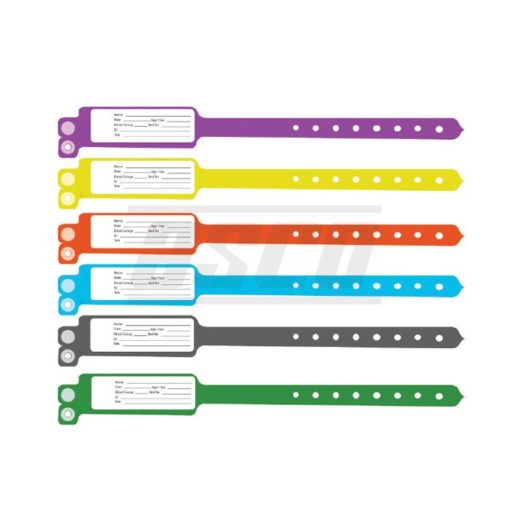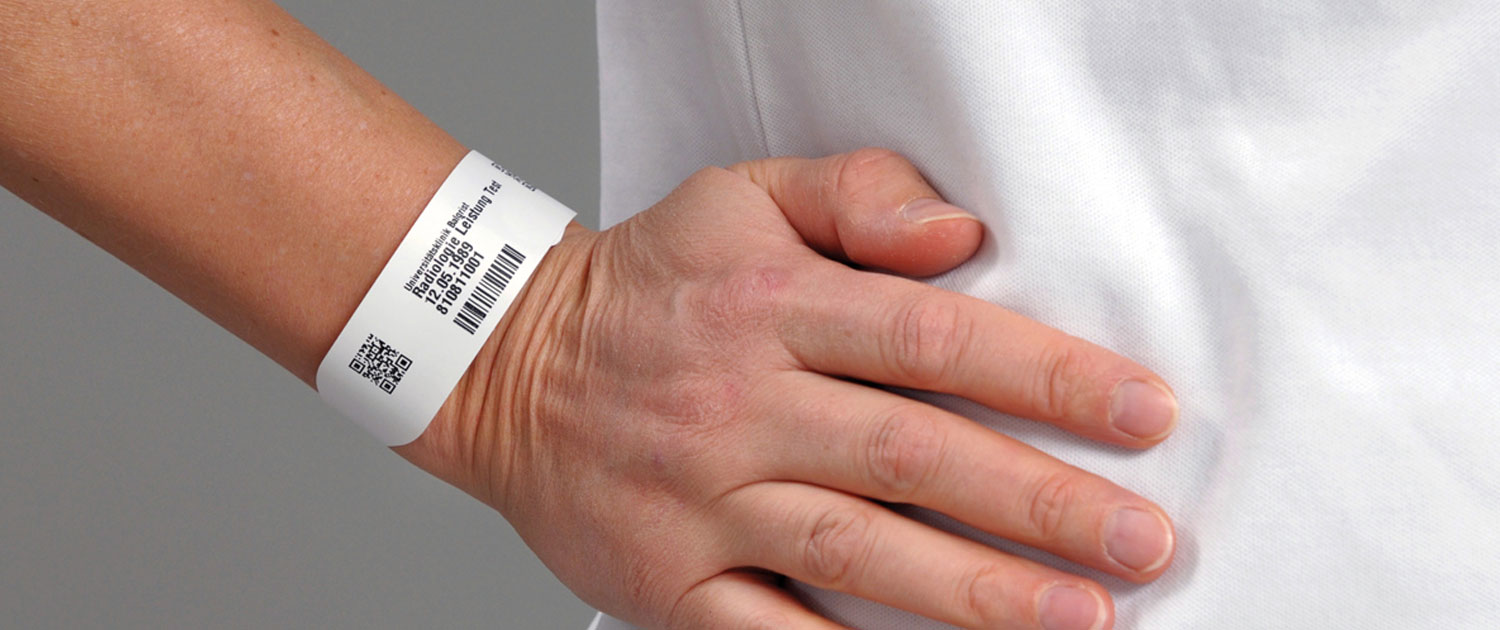Best Practices for Introducing a Patient Identification Band System in Your Clinic
Best Practices for Introducing a Patient Identification Band System in Your Clinic
Blog Article
Checking Out the Different Kinds Of Patient Identification Band Utilized in Medical Facilities
In the detailed globe of healthcare, the critical function of Patient Identification bands typically goes unnoticed. These bands, varying from basic paper wristbands to advanced RFID bands, develop the foundation of Patient safety and security methods, making sure accuracy in Patient Identification.
Understanding the Value of Patient Identification Bands
While they might appear like mere devices, Patient Identification bands play a crucial role in medical centers. These bands work as an essential tool for verifying Patient identification, preventing clinical errors associated with misidentification. The bands typically show important details such as the Patient's name, age, blood kind, and any kind of recognized allergies. They permit healthcare specialists to rapidly access this critical details, consequently assisting in punctual and exact medical treatment. Patient Identification bands likewise aid in simplifying administrative tasks, making certain accurate record-keeping and invoicing. Regardless of their simplicity, these bands symbolize the concept of Patient security, a keystone of quality health and wellness treatment. Without them, the threat of medical mistakes, and subsequently, Patient harm, may considerably boost.
Traditional Paper Wristbands: Their Usage and Limitations
Typical paper wristbands have actually been a staple in Patient Identification throughout numerous medical centers. While their usage is prevalent, they harbor certain restrictions that may impact their efficiency in Patient administration. This section will concentrate on the extent of their application and the inherent disadvantages related to their use.
Paper Wristbands: Usage Range
In the realm of Patient Identification, paper wristbands have long held a critical duty. These bands are normally used in outpatient setups, where the Patient's keep is momentary. The wristbands contain essential details such as the Patient's name, day of birth, and a special Identification number. This straightforward, yet reliable system, allows clinical experts to quickly and properly determine patients, making certain the appropriate therapy is provided. Paper wristbands are also utilized in emergency situation circumstances, where quick Identification is extremely important. Their use expands to events like blood contribution drives and mass vaccination programs, additionally emphasizing their versatility. In spite of advancements in modern technology, the humble paper wristband stays a cost-efficient and dependable remedy for Patient Identification in different health care circumstances.
Limitations of Paper Wristbands
Regardless of their extensive usage, paper wristbands are not without their downsides. In enhancement, paper wristbands commonly do not have the technological capabilities of even more modern choices, such as barcoding or RFID chips, limiting their capability to simply displaying created information. Paper wristbands can create discomfort or skin irritability to some clients, specifically when worn for extensive periods.
Barcoded Wristbands: Advancements in Patient Identification
While Patient Identification has long been an important aspect of health care, the introduction of barcoded wristbands signifies a considerable jump ahead. These bands leverage the simplicity of barcoding innovation, permitting Patient info to be quickly scanned and accessed. They boost the rate and accuracy of Patient Identification, reducing the danger of clinical errors associated with misidentification. Barcoded wristbands are cost-effective, simple to generate, and eliminate handwriting errors usual with manual systems. Nevertheless, they are not without constraints. While they supply improvements over typical bands, the barcode can become smudged or used, providing it unreadable. In spite of this, barcoded wristbands continue to be a vital tool in modern-day healthcare settings, symbolizing the crossway of innovation and Patient treatment.
Radio Regularity Identification (RFID) Bands: a Step Towards Futuristic Medical Care
The development of Patient Identification bands has actually brought regarding the appearance of Radio Regularity Identification (RFID) Bands (patient identification band). These ingenious devices present key advantages for healthcare centers, supplying a more efficient and technologically advanced ways of Patient Identification. The application of RFID in medical care is a substantial action in the direction of a more futuristic method to Patient management and security
Comprehending RFID Bands

RFID Bands: Secret Advantages
Welcoming a future where modern technology and medical care combine, superhigh frequency Identification bands supply numerous vital benefits. Mostly, these bands anchor enhance Patient safety and security by offering accurate, instantaneous Identification, consequently minimizing medical errors. RFID bands can save a huge quantity of Patient information, including medical background and allergic reactions, allowing personalized treatment. They likewise improve management tasks, as the automated data entry replaces hand-operated processes, improving performance and reducing documentation. In addition, RFID bands use real-time tracking of people, essential in risky environments such as surgical procedure or intensive care. These bands are long lasting and resistant to environmental variables, guaranteeing regular performance. Overall, RFID bands represent a substantial improvement in Patient Identification modern technology, benefiting both people and doctor.
Executing RFID in Medical Care
These bands offer a smooth way to track and identify people, ensuring their safety and enhancing performance in therapy procedures. RFID bands lower clinical mistakes by supplying accurate Patient Identification, which is important in avoiding misdiagnosis or incorrect medicine administration. Therefore, the implementation of RFID bands is a considerable action towards enhancing Patient safety and security and healthcare delivery.

Color-Coded Wristbands: Aiding in Quick and Accurate Medical Diagnosis
In the busy environment of a medical center, color-coded wristbands have emerged as essential tools for swift and exact Identification of a client's clinical condition. These wristbands, used by people, carry particular shades that correspond to different clinical problems or conditions. This system is made to provide prompt visual hints to medical care suppliers, enhancing Patient safety and care high quality.
Strategies for Reliable Application and Management of Patient ID Bands
Achieving optimum use Patient Identification bands necessitates a well-structured technique for their implementation and administration. The very first step involves training all health personnel on the significance of appropriately applying and reading these bands. Health centers must standardize the use of ID bands throughout all divisions, ensuring harmony and decreasing discrepancies. Normal audits needs to be conducted to verify adherence to policies and to correct any disparities. Patient education and learning is additionally crucial; patients must understand the objective of the bands and the demand for their consistent wear. patient identification band. Finally, it's necessary Look At This to have a backup plan in area, such as barcode scanning or biometrics, to make certain that Patient Identification is never endangered.
Verdict
Patient Identification bands are vital in medical facilities to make certain safety and accuracy. Reliable implementation and administration of these bands can dramatically minimize clinical mistakes, enhance effectiveness, and enhance total Patient care.
These bands, varying from basic paper wristbands to advanced RFID bands, develop the foundation of Patient safety methods, making sure precision in Patient Identification.The development of Patient Identification bands has brought regarding the appearance of Radio Frequency Identification (RFID) Bands. On the whole, RFID bands represent a significant improvement in Patient Identification innovation, profiting both patients and healthcare providers.
RFID bands decrease medical mistakes by supplying exact Patient Identification, which is critical in preventing misdiagnosis or wrong medication administration. Patient education and learning is likewise crucial; individuals must comprehend the objective of the bands and the need for their constant wear.
Report this page